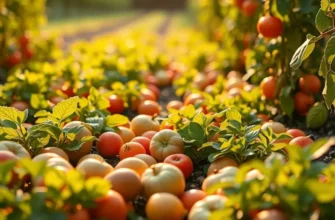The common belief that freezing food kills all bacteria is a persistent food myth. While freezing is a well-regarded method for food preservation, it affects bacteria in various ways. Understanding how freezing interacts with bacteria can help you make safer choices in food storage and preparation.
How Freezing Affects Bacteria

Freezing is often viewed as a catch-all solution for preserving food and preventing spoilage. However, when it comes to bacteria, the story is more complex. One might wonder, does freezing food actually kill bacteria, or does it merely put them to sleep? Let’s unravel this.
Bacteria are living microorganisms that thrive in various environments, including food. They usually proliferate when conditions are optimal, such as at warm temperatures and in moist surroundings. Freezing food presents an entirely different challenge for these organisms. When food is frozen, the water inside it crystallizes. This crystallization can cause structural damage to bacterial cells. However, this doesn’t guarantee that all bacteria are eliminated.
Cold temperatures, especially those below freezing, drastically slow down bacterial metabolism. This means they become inactive rather than dead. Most bacteria enter a state of dormancy, where they lie in wait for more favorable conditions to return.
Different bacteria respond uniquely to freezing. For instance, psychrotrophic bacteria, which include certain strains of Listeria and Yersinia, can survive and even grow at refrigeration temperatures. However, their growth is limited in properly maintained freezing conditions. On the other hand, pathogens like Salmonella and E. coli are more likely to be significantly affected by freezing but are not necessarily killed.
Some studies suggest that freezing conditions (-18°C or lower) might kill certain bacteria to a degree, yet the bactericidal effect is not instant or guarantee all forms are destroyed. Instead, the primary benefit of freezing is the inhibition of bacterial growth rather than complete eradication.
For food safety, it’s crucial to combine freezing with other preservation techniques. For example, proper cooking after thawing ensures any dormant bacteria that become active will not survive. This highlights the importance of food handling post-freezing. As temperatures increase during thawing, dormant bacteria can resume activity, particularly if food is allowed to thaw at room temperature.
Thus, understanding how freezing affects bacteria is an essential component of kitchen safety. It’s vital to maintain appropriate freezing temperatures and to handle frozen food with extra caution once thawed. These practices ensure that bacteria do not get a second chance to proliferate.
For more insights into maintaining food safety while minimizing waste, consider exploring strategies in eco-smart kitchen storage. These strategies provide crucial steps towards reducing potential bacterial risks in your kitchen without resorting to wasteful habits.
Food Safety Practices in Freezing

Freezing food is an effective way to prolong its shelf life, but it must be done correctly to ensure safety. Understanding the principles of freezing and employing the right techniques can help minimize bacterial growth and maintain food quality.
Firstly, consider the packaging. Proper wrapping is essential to avoid freezer burn and potential contamination. Use airtight containers or vacuum-sealed bags to protect food. Remove as much air as possible to prevent the oxidation and dehydration that cause freezer burn, affecting taste and texture.
Maintaining a consistent freezer temperature is crucial for food safety. Set your freezer to 0°F (-18°C) or lower. This temperature halts bacterial growth, though it doesn’t kill bacteria present in food. Thus, proper handling and preparation before freezing are important.
When preparing food for freezing, ensure it is fresh and close to newly purchased. Cooked meals should be cooled before storing to avoid raising the freezer’s internal temperature. Dividing large quantities into smaller portions can help food freeze faster and more evenly, preserving texture and flavor.
Thawing food properly is equally important for safety. Bacteria can become active again and multiply as food thaws. So, never thaw food at room temperature. Instead, use safer methods such as thawing in the refrigerator, which keeps food out of the bacterial danger zone (40°F – 140°F), or using a microwave if you plan to cook it immediately.
Another swift method is immersing food in cold water. Ensure the water is changed every 30 minutes to keep it cold while preventing bacterial growth. Avoiding partial thawing and refreezing is a sound practice; this can diminish quality and possibly allow bacteria to grow.
For eco-conscious kitchen enthusiasts, understanding the full cycle of food management can also involve waste reduction. Learn more about low-waste cooking and prep here. Optimizing energy use by only opening the freezer when necessary can also contribute to a more sustainable kitchen practice.
By following these steps, you can maximize the safety and quality of your frozen foods. Proper food safety practices in freezing not only protect against spoilage and foodborne illness but also contribute to healthier and more sustainable eating habits.
Final words
Understanding that freezing does not kill bacteria but rather inhibits its growth is crucial for safe food handling. By adopting proper freezing practices and ensuring food is cooked correctly after thawing, you can minimize health risks. Always remember that once food is thawed, proper cooking ensures safety from any surviving bacteria. Knowledge is key to maintaining healthy eating habits and enjoying food safely.








